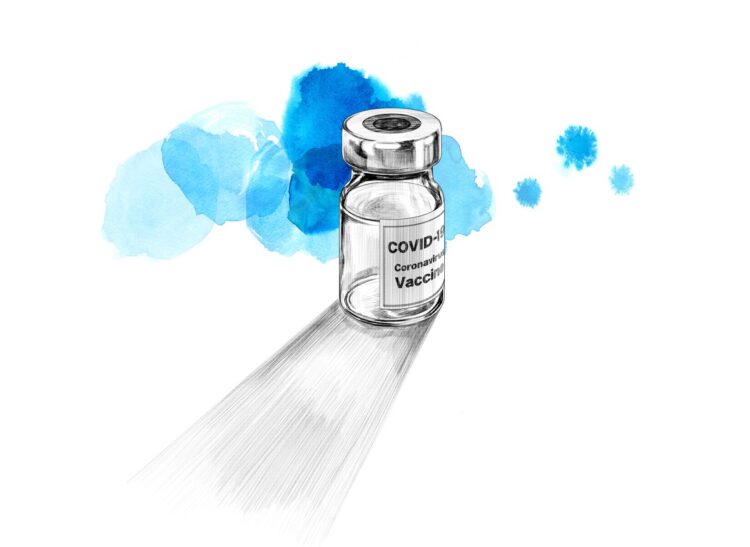June 25, 2021
By Stephanie Schorow for the Global Mass Vaccination Site Collaborative
The continued urgency for COVID-19 vaccinations was underscored in the June 25, 2021, meeting of the Global Mass Vaccination Site Collaborative, which touched on mitigation efforts in the United States and Brazil. Even as mass vaccination sites wind down, vaccination teams are looking for ways to reach unvaccinated populations — including reluctant health workers.
Matthew McCoy, of Community Organized Relief Efforts (CORE), speaking from Brazil, put the situation in perspective with a report on vaccination efforts there. CORE had helped stage mass vaccination efforts in Dodgers Stadium, and the nonprofit is now partnering with groups in Brazil to create vaccination sites in places like convention centers and samba schools. Brazil has had more than 500,000 COVID-19 related deaths and the local municipal governments are strictly limiting vaccine tiers due to low distribution of vaccines from the federal government, McCoy said. Brazil has experienced low supplies and delays in administering second doses. All record-keeping was previously done on paper; CORE brought in tablets.
Not only is there vaccine hesitancy, but there’s deep distrust of the government — much of it justified, McCoy said, citing examples when saline solutions, not vaccines, have been administered due to corruption. “Most people only want the Pfizer vaccine,” he said. To build trust, people are shown vials of the vaccine and empty syringes to indicate they have received an actual dose. “It’s a lot different from Dodgers Stadium,” McCoy said.
Gill Wright, MD, of the Metro Public Health Department, based in Nashville, Tenn., summarizes vaccination efforts there, including mass sites at Nissan Stadium. About 68 percent of those over 55 in Tennessee have been vaccinated, he said. The state is experiencing a few cases of the Delta virus; overall there is a 1.5 percent positivity rate. More than 60 percent of the homeless population has been vaccinated, but there is a disparity between Black and white vaccination rates. “We are holding events for minorities and the underserved,” he said.
Becky Fox, MSN, RN-BC, of Atrium Health reported on efforts to roll out vaccines to emergency departments and in-patient hospitalization and to increase vaccination rates to 75 percent by July 4 to “teammates” in health care. Fox admitted concern that this rate is not higher. Teammates’ reasons for not getting vaccinated include the inability to access vaccines, coordination with work schedules, insufficient education on vaccine safety, and a “wait and see” approach. Some remote workers say that since they don’t go into work, they don’t need the vaccine. Fox added, “I wish I could say ‘Look at Brazil.’”
This led to a discussion of vaccine incentives — and just as important — disincentives. Fox cited vaccine lotteries and scholarships giveaways as well as getting rid of policies that pay people to stay home if they suspect they have been infected. However, mandating vaccination for all current employees may not work; “You can’t fire 25 percent of your workforce,” noted Dan Resnick-Ault, MD, of the University of Colorado School of Medicine. Said Fox, “We all need to do this together.”
She added, “We have to remind ourselves as long as we’re moving in the right direction, we’re doing OK.”
Resnick-Ault gave a rundown of efforts in Colorado, including the winding down of the mass vaccination site at Coors Stadium and a shift to providing vaccines through emergency departments; this could extend to patients’ family and visitors. However, so far, only 517 doses have been given in emergency departments, which generally see 280 to 360 patients a day, he said.
Resnick-Ault noted the difficulty of holding conversations with hesitant patients in the emergency department when physicians are already busy. Yet the ED encounter represents the first non-social and non-media source of information on vaccines for many patients. “We will bend over backwards to get people vaccinated,” he said.
The slowdown in vaccination rates concerns members of the collaborative although they acknowledge this was perhaps inevitable. Observed William Roy, Federal Coordinating Officer with FEMA region 1, “We knew we were going to hit the wall. There definitely needs to be a carrot-and-stick approach going forward.”
Key Takeaways
Both incentives and disincentives can be used to increase vaccination among health workers.
- Incentives include: Awards or prizes; relaxing mask-wearing policies; sponsored meals.
- Disincentives include: Elimination of paid absent time for suspect COVID exposure; limiting participating in activities like conferences and travel.
- Mandate all new hires to be vaccinated.
To encourage vaccination for the general public:
- Offer vaccine during health screenings.
- Increase vaccine availability at on-site clinics.
- Establish “Vaccine to You Rounding Team” to bring vaccine units in key areas to acute care facilities.
- Support rounding teams with vaccine ambassadors and/or infectious disease experts.
- Push “safety for patients” message.
- Share internal data of vaccine effectiveness.
The Global Mass Vaccination Site Collaborative was launched as a way for stakeholders directing vaccination campaigns around the world to come together and learn from each other’s efforts. This blog series was created to record and share the learning and insights gained from this collaboration. Read blogs from our previous meetings here.



